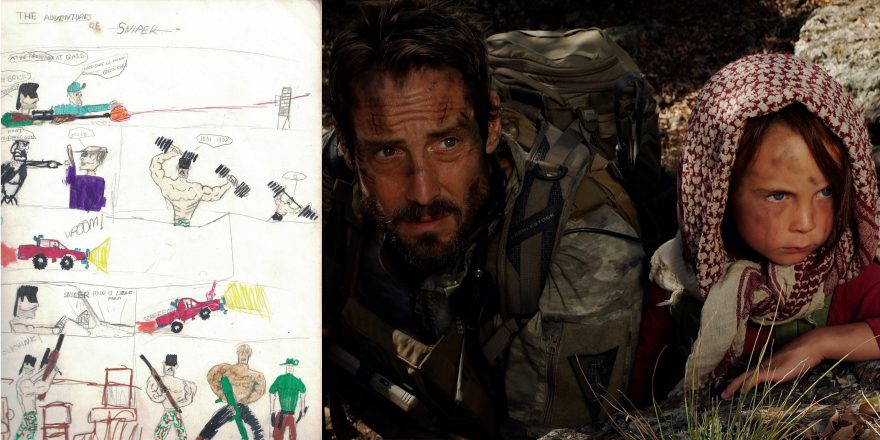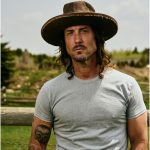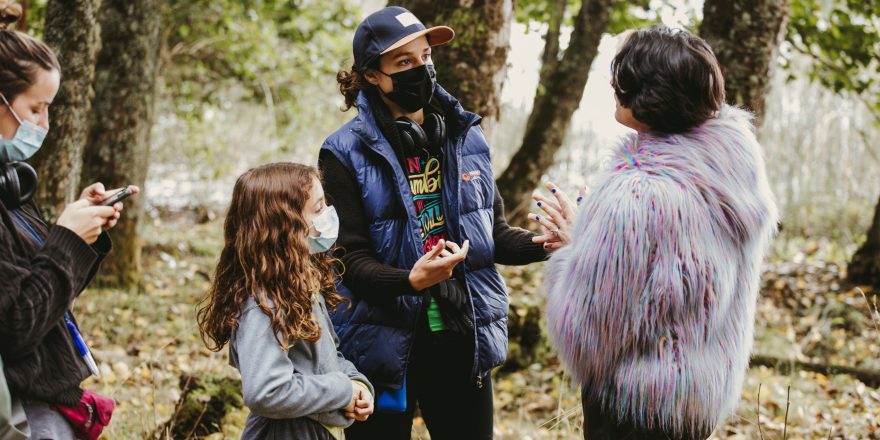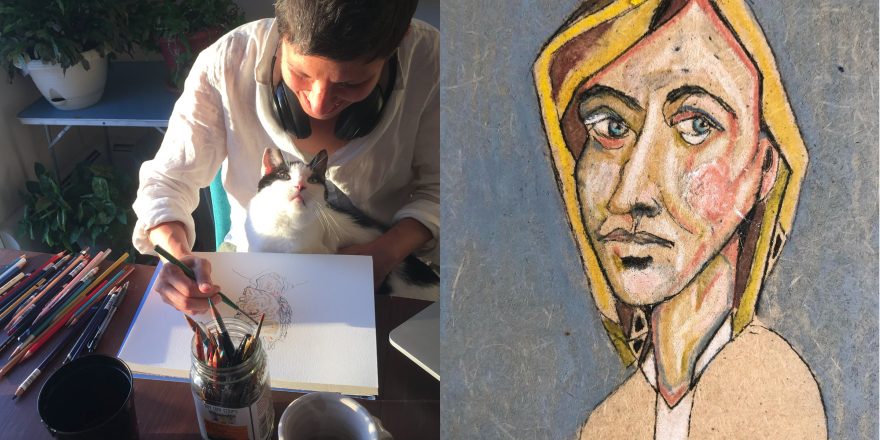As a child, illustration was always a primary source of creative expression. I used to draw incessantly. It was my first outlet of expression, even prior to acting, music, etc. It’s how my mind processed ideas and a way for me to articulate what I envisioned as a storyteller. At the primitive human level, drawings are the base level of communication, before letters or words.
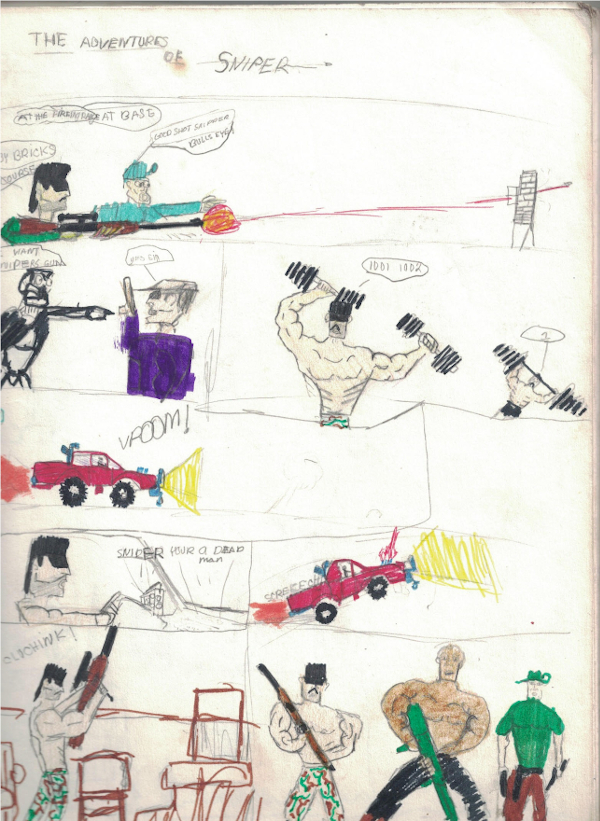
In the early ’80s, when I was four or five years old, I recall getting a large sketchpad, which became my bible. One of the first “storylines” was about a hero called Sniper. I illustrated it in a comic book-type panel. Since it was really my first story, it had a special visual impact on my mind. I created several comic panels and, looking back, I think I was making storyboards for these ideas I had for stories and characters. The Sniper panel, though, was the one that was really burned in my memory. So much so that when I think back to the roots of my creativity, I immediately go back to that panel of drawings.
Forty years later, I still create hand-drawn images for the stories in my head. Though my drawing hasn’t gotten much better, I am now aware that my intention is to merely create a guide to make films. Below, you can see the comparisons of my storyboards and the actual frames of my new film, Warhorse One. This particular sequence is of a stunt in the film called the “leap of faith,” where the character chooses to put his life in the hands of God.
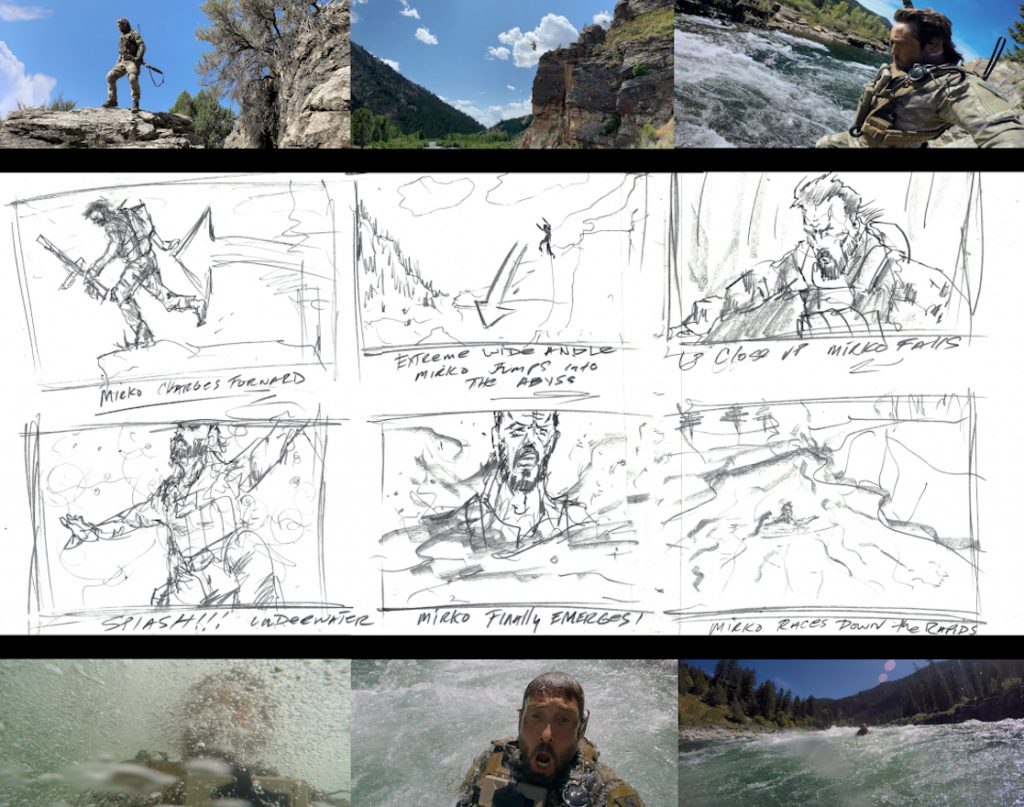
This was an important sequence and after I storyboarded it, I actually went out and shot some test footage at the location I’d found for the stunt. As fate would have it, the storyboards and the locations matched up perfectly. I think those early days of expressing myself through illustration really allowed my mind to develop a visual storytelling style that still very much guides my creative compass today.
I’ve worked with some directors who don’t have that artistic side, who are more administrators and don’t create storyboards for their work, and at times I’ve found myself on set watching a director try to figure out what they want on the spot, which can be pretty aggravating. On the flipside, there is one director I’ve worked with who does have an incredible artistic talent: Ridley Scott. One day, when we were in North Africa shooting Black Hawk Down, I arrived on set and was getting ready to head out with the second unit director to shoot a sequence for the film where some of us Special Forces soldiers do a vehicle interdiction. Rid walked up to us, pulled out his sketchpad and pen and, right in front of us, started illustrating a storyboard sequence of what he wanted us to shoot. The drawings were fantastic, and him creating them instantly allowed those of us standing around to visually understand the sequence and what he envisioned. I realized then that he and I shared that expressive skill, where you can put on paper, in the form of drawing, the imagery you have in your mind.
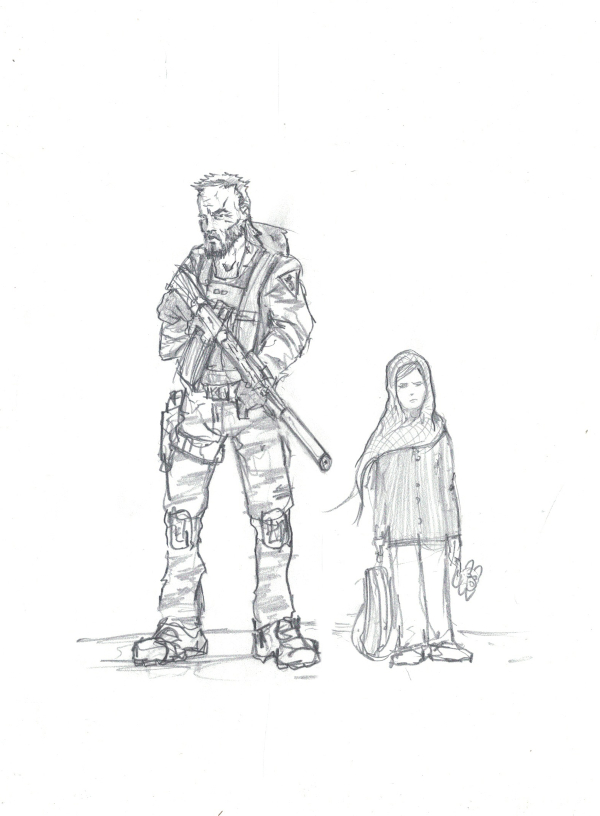
After that experience, I realized having that ability is really valuable, because not only can you create a guideline to keep yourself on track (a movie set can sometimes be a circus of distractions), but you can also share your vision with the people around you on set. It’s an instant translation that can increase the efficiency of the group, especially between the director and the camera crew, helping you frame what you want to capture on film.
I would also sketch while I was in postproduction on my film Warhorse One, when I was waiting for SFX or clips that were rendering or while I was editing in the studio. If I had an idea of something I thought was missing from the film, I’d make some sketches; if I felt they would make the film better, I would then go shoot them. I had some storyboards that unfortunately got thrown away (partly my fault, because I don’t organize my papers very well) of an amazing shot of the young girl in the film who protects my character, Master Chief Richard Mirko, a Navy SEAL Master Chief stuck behind enemy lines in Afghanistan. I was very sad they got lost or thrown away, because I was actually very proud of them!
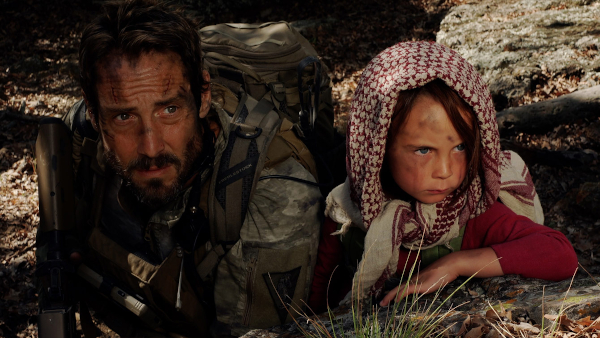
As a child drawing and illustrating felt pure; it was how I could communicate with the world, and it still does feel primitively pure. Now, though, it’s even more useful, because it has become a tool that can help me make films to communicate with the world.


